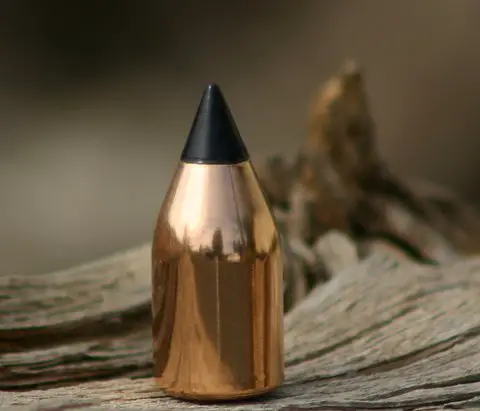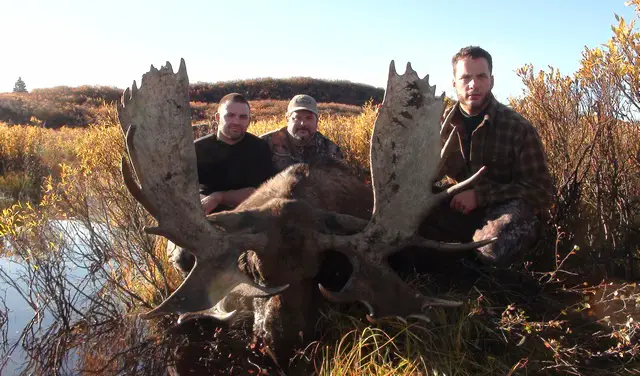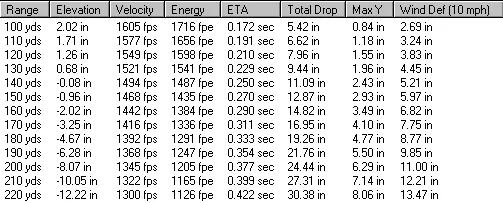


Blackhorn 209 Parker Ballistic Extreme Whitetail Load

Above is is the 300 grain Ballistic Extreme. This is what I'd call a good, general purpose whitetail combination using 80 grains by weight of Blackhorn 209, Federal 209A shotshell primers, and Parker Ballistic Extreme bullets with the short, black MMP sabot. The test rifle used was a T/C Encore Pro Hunter. It is really a good "anything" load, inclusive of elk and moose.

Above, one of two beautiful Yukon moose recently taken with one shot: a Parker 300 grain Ballistic Extreme pushed by Blackhorn 209.
The charges I used were dispensed and weighed by an RCBS Chargemaster 1500. The Encore shot all three weights of the Parker Ballistic Extreme well, but this rifle showed a distinct preference for the 300 grain version (shown above). Your personal rifle may of course like a different weight of bullet. Eighty grains by actual weight of Blackhorn 209 moves the 300 grain Parker Ballistic Extreme at about 1910 fps muzzle velocity. Note that the Pro Hunter has a usable barrel length shorter than you might think: right at 24-3/4 inches from the end of the breechplug to where the rifling ends.
Sighted in 2 inches high at 100 yards, it is center of the body hold to about 175 yards and go pick him up. At 200 yards, hold on the back, at 220 yards, six inches of holdover or so is required if you need to go out that far. As you might imagine, field conditions (particularly wind) is a significant in determining whether you want to go the holdover route at extended ranges. This is all based on the 8-10 inch kill zone of a whitetail deer: with larger game such as elk or moose, you have quite a bit more vital real estate to work with.

Real-world ballistics, based on actual shooting with the 300 grain Ballistic Extreme / 80 gr. weight Blackhorn 209, approximate this from 100 - 220 yards. There are, of course, many flatter shooting / higher recoil approaches. If you want to flatten out your trajectory a bit more, then you have the Parker 300 grain Match Hunter to work with along with heavier propellant weights.
If you want better consistency, use a SpinJag. Also, be sure to allow for barrel cooling with sabots. If you can feel heat coming off your barrel, it is far hotter where you seat your sabot and while a hot barrel doesn't guarantee a flyer, it certainly increases the probability. Lots of folks write asking for "the best load." I wish I had an answer. My regular test rifles include a pair of Encores, a Contender G2 with a .50 caliber barrel (essentially a short Encore barrel) and a pair of Savage 10ML-IIs. They all like different loads.
Volumetric black powder measures are made to no standards. You may have one made of highly polished plastic by old world craftsmen in China, or a brass version from India, or something completely different. Weight is a far better way to go. A painless way to work up loads is to use your Blackhorn 209 in whatever mysterious black powder measuring device you have, starting at 80 grains of volume. When you get to the area you prefer, just weigh your volumetric charge and then duplicate it by weight. Eighty grains by weight is a practical, reasonable, full-powered hunting load as far as I'm concerned. Blackhorn 209 publishes ballistics for modern inline muzzleloaders inclusive of 84 grains by weight and up to a 350 grain projectile. For more than that, be sure to check with respective rifle manufacturer.

Copyright 2012 by Randy Wakeman. All Rights Reserved.

Custom Search


